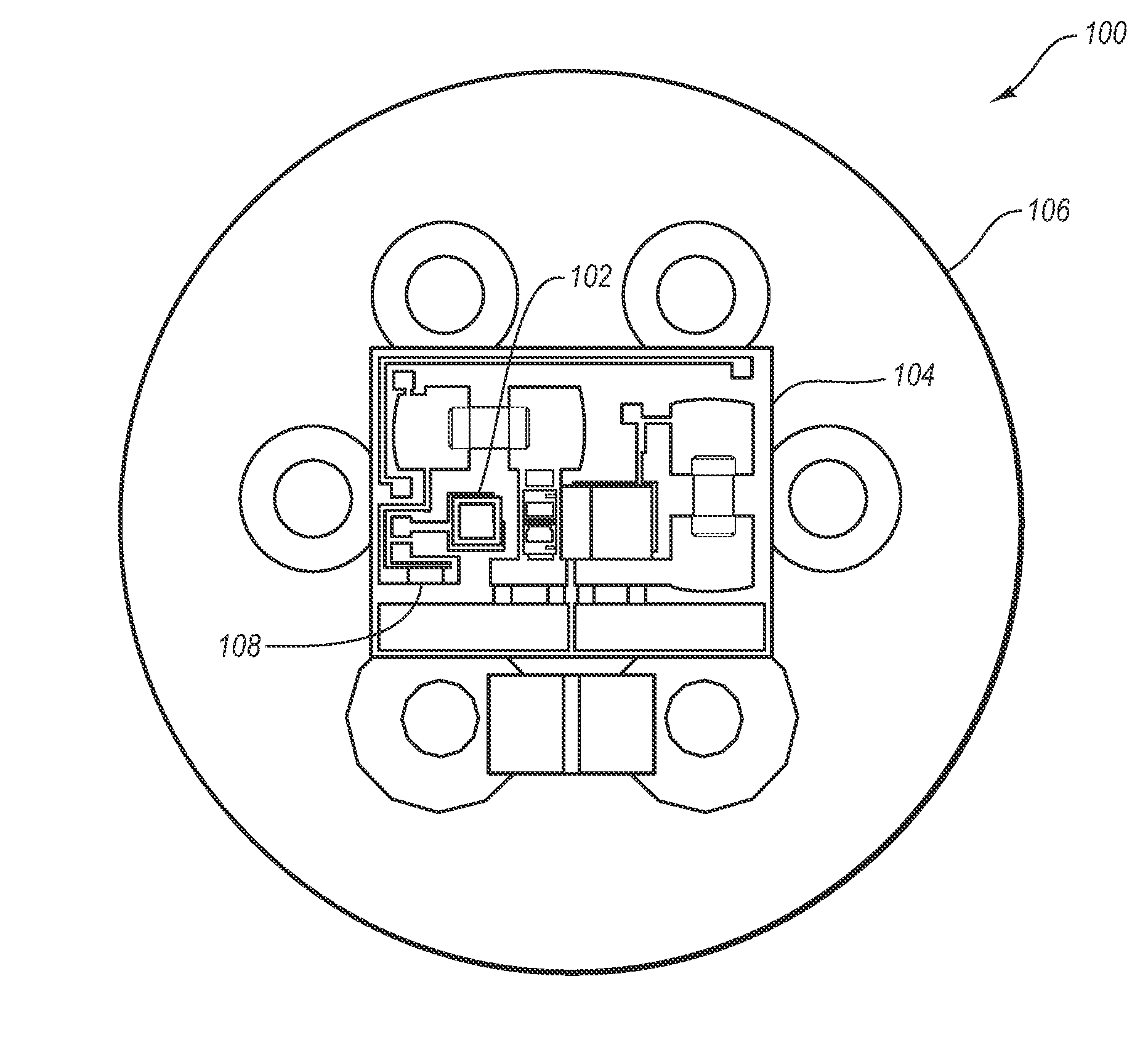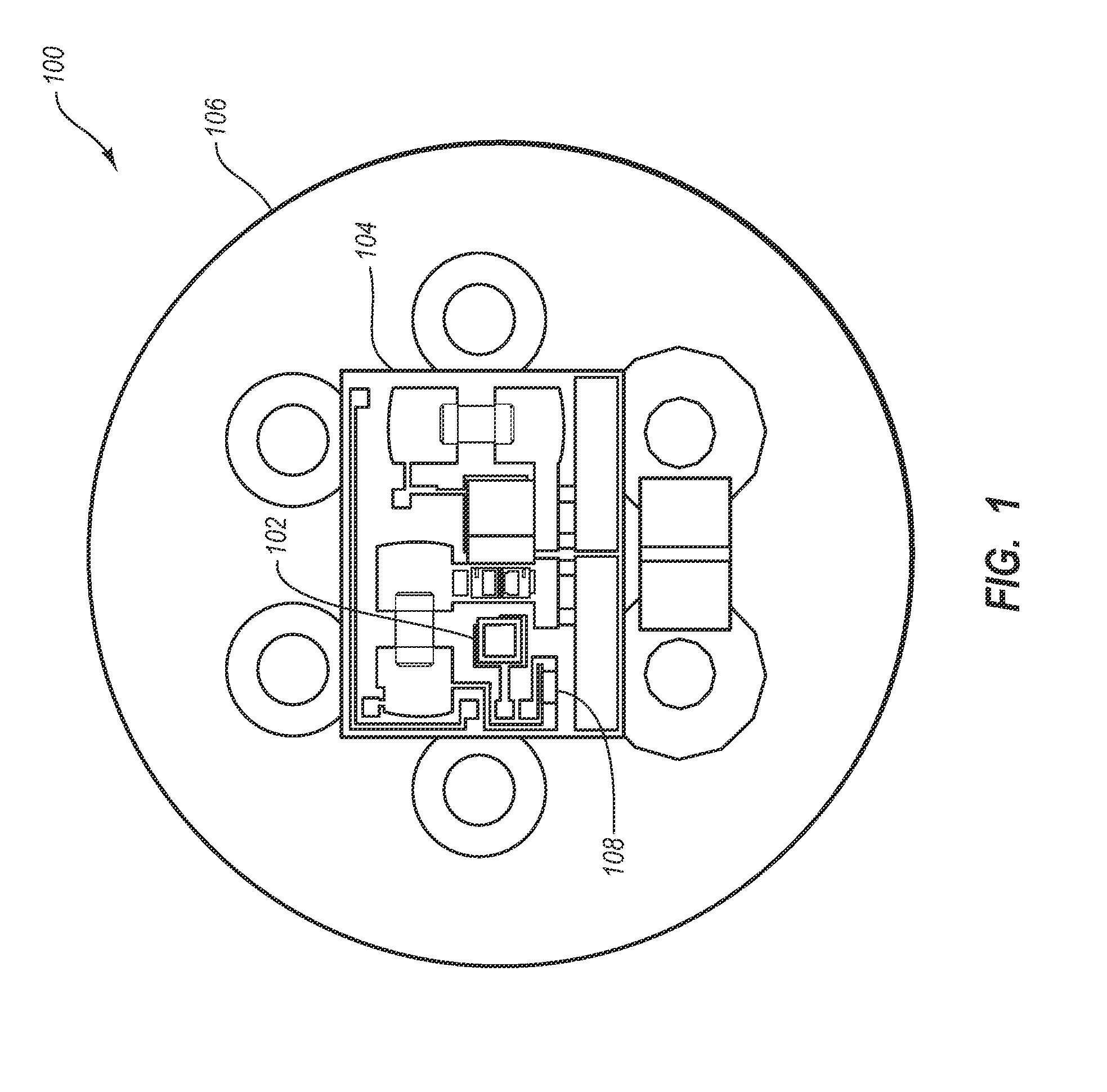Resistive heating element for enabling laser operation
- Summary
- Abstract
- Description
- Claims
- Application Information
AI Technical Summary
Benefits of technology
Problems solved by technology
Method used
Image
Examples
Embodiment Construction
[0015]One embodiment described herein is directed to expanding the range in which a laser assembly, such as a transmitter optical sub-assembly (TOSA) or other laser package, including a laser, may be operated. In particular, one embodiment includes a resistive heating element disposed on the same substrate as the laser in the TOSA. A determination can be made as the ambient temperature of the operating environment for the TOSA. If the ambient temperature is below some pre-determined temperature, current can be passed through the resistive heating element. Heat is transferred to the laser through the substrate to raise the operating temperature of the laser. Current through the resistive heating element can be adjusted depending on the temperature difference between the actual ambient temperature and an ideal ambient temperature.
[0016]Modern day computer networks allow for transmissions of large amounts of data between computer terminals. Data may be transmitted on a network across a...
PUM
 Login to View More
Login to View More Abstract
Description
Claims
Application Information
 Login to View More
Login to View More - R&D
- Intellectual Property
- Life Sciences
- Materials
- Tech Scout
- Unparalleled Data Quality
- Higher Quality Content
- 60% Fewer Hallucinations
Browse by: Latest US Patents, China's latest patents, Technical Efficacy Thesaurus, Application Domain, Technology Topic, Popular Technical Reports.
© 2025 PatSnap. All rights reserved.Legal|Privacy policy|Modern Slavery Act Transparency Statement|Sitemap|About US| Contact US: help@patsnap.com


